Challenges and Solutions Tissue Culture Aroid Plants
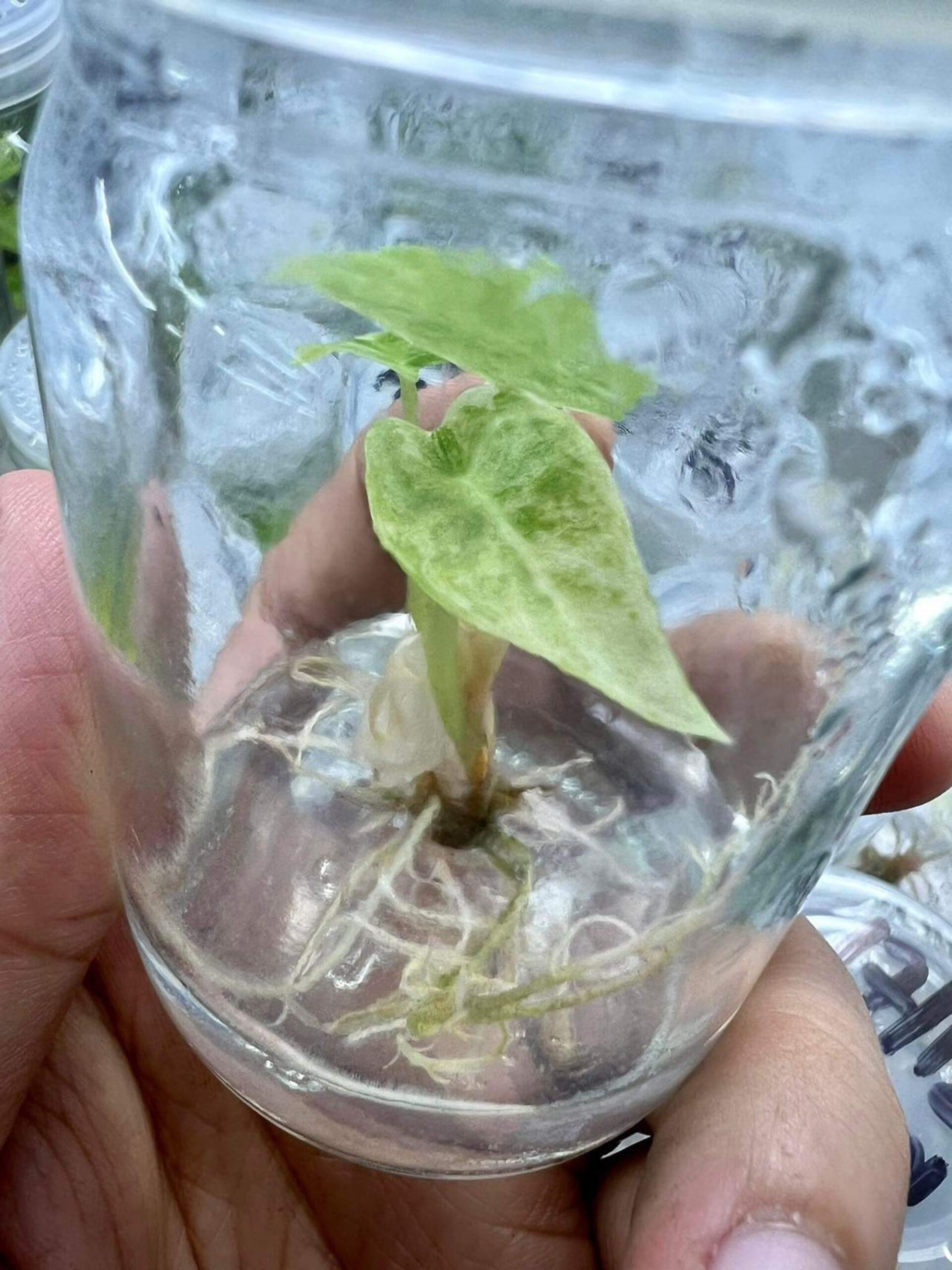
The captivating shapes, vibrant colors, and intricate patterns of aroids like Philodendrons, Monsteras, and Anthuriums are a testament to the remarkable diversity within this plant family. But cultivating these beautiful plants can often be a demanding endeavor, especially for rarer species. This is where the magic of tissue culture comes into play. Tissue culture, an in vitro propagation technique, offers a revolutionary approach to multiplying and preserving aroid plants.
It allows for the production of clones from a single plant, generating numerous identical offspring with exceptional efficiency. This technique opens doors to the propagation of rare and endangered species, making these botanical treasures accessible to a wider audience. However, tissue culture is not a foolproof method. It throws up a range of challenges, particularly concerning contamination, genetic stability, and the success rate of culturing.
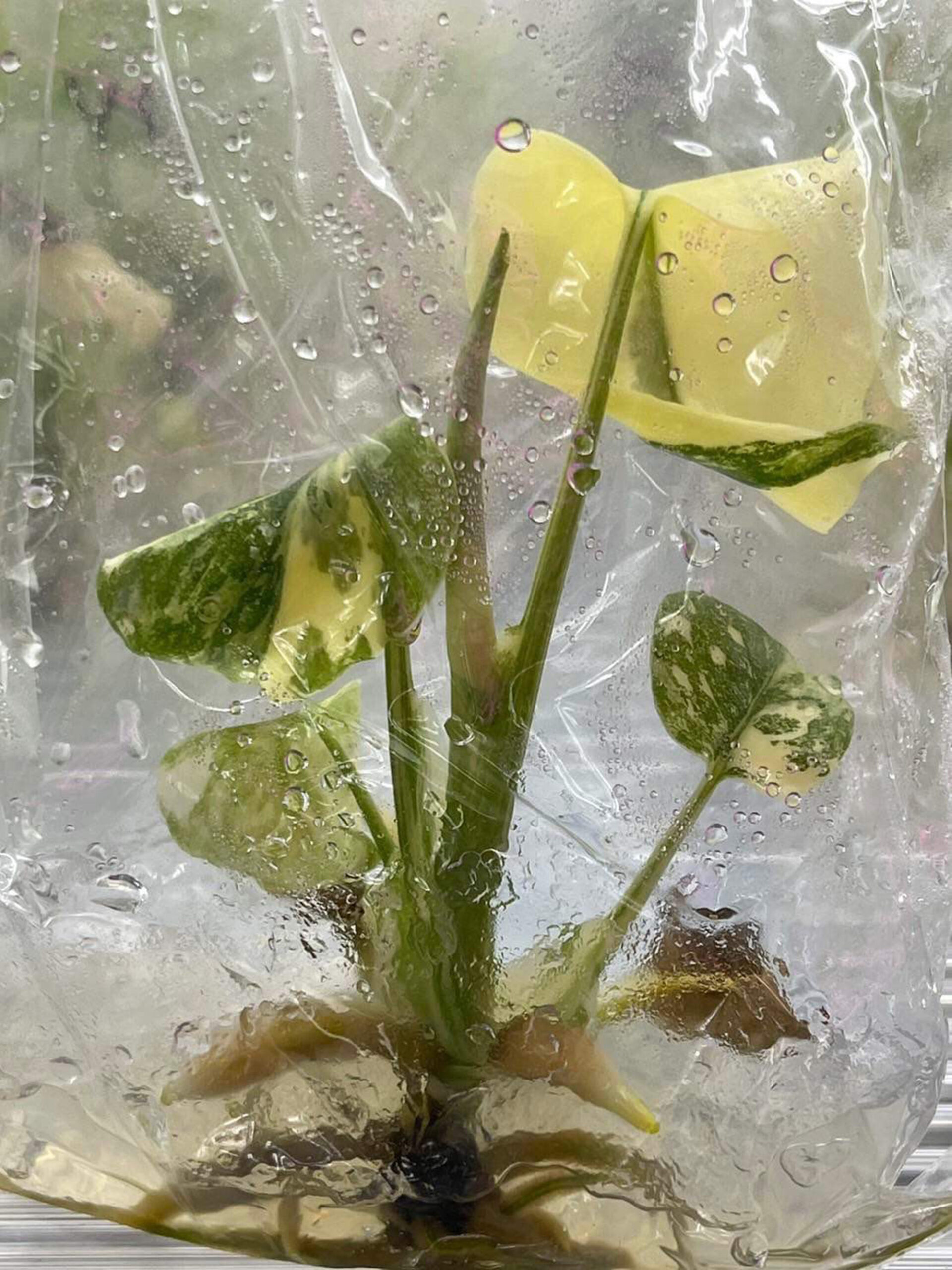
Monstera Thai constellation Creme Brulee Variegated Tissue Culture
Contamination Issues in Tissue Culture: The Silent Enemy of Aroid Propagation
Contamination is a constant threat in tissue culture. The delicate balance between sterile conditions and plant growth is susceptible to intrusion by bacteria, fungi, and even other undesirable organisms. These contaminants can wreak havoc on the tissue culture process, leading to the loss of precious plant material and compromising the entire operation.
Identifying the Sources of Contamination
The sources of contamination in tissue culture can be diverse and multifaceted. Some common culprits include:
- Unsterile equipment and work surfaces: Improper sterilization of tools, glassware, and the work environment can introduce microorganisms into the culture system.
- Contaminated plant material: The parent plant used as the source for explants (the plant tissues used to initiate the culture) may harbor endophytic bacteria or fungi, which can then proliferate in the culture medium.
- Airborne contaminants: Dust particles, airborne spores, and even human-borne microorganisms can find their way into the culture vessels, leading to unwanted growth.
- Inadequate aseptic techniques: Poor handling procedures, such as improper use of the laminar flow hood or careless manipulation of the cultures, can compromise the sterile environment.
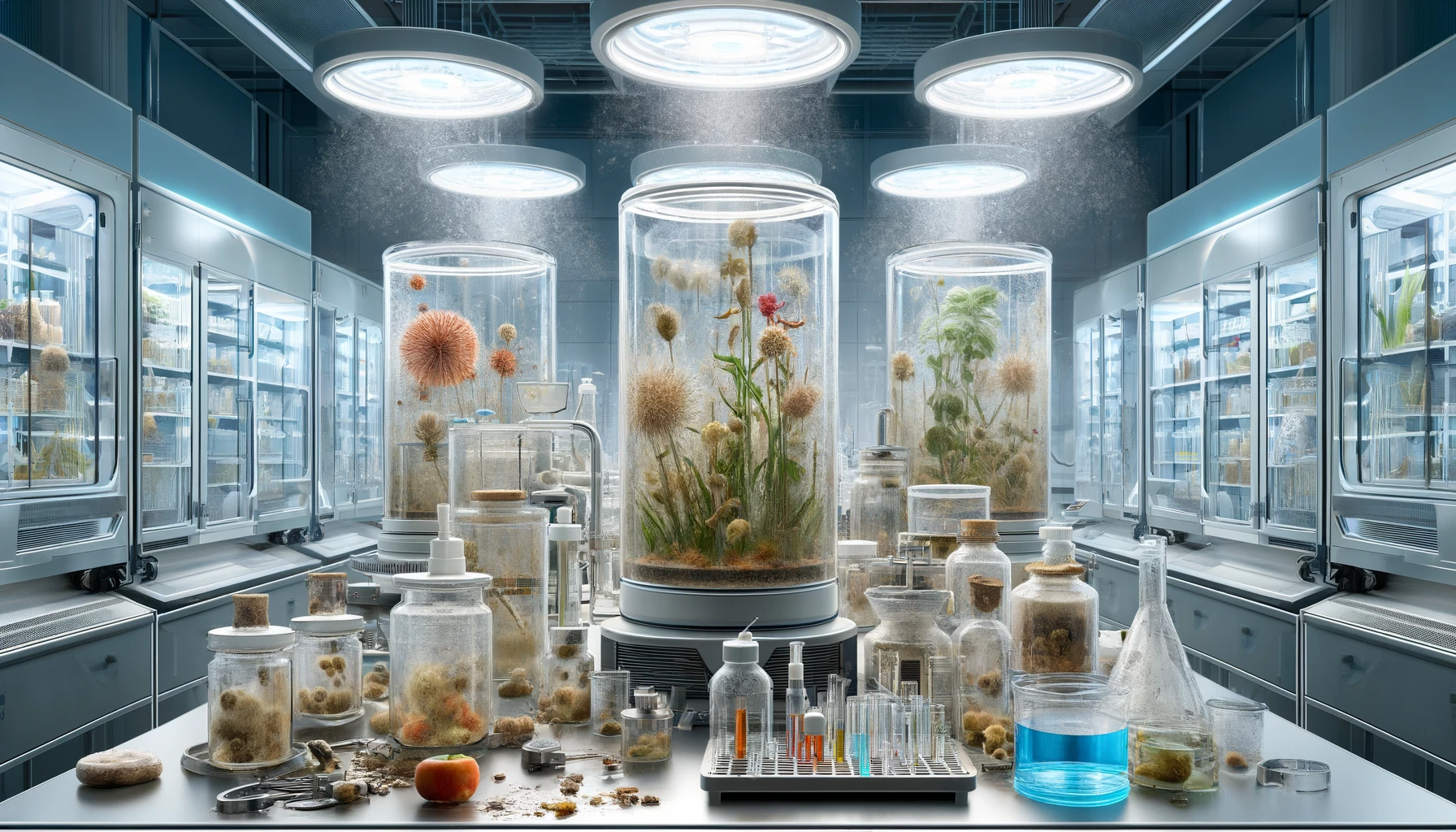
Contamination Issues in Tissue Culture
Strategies for Combating Contamination
Overcoming contamination in tissue culture requires a multifaceted approach. Here are some effective strategies:
- Strict sterilization protocols: Ensuring that all equipment, glassware, and the work environment are thoroughly sterilized using methods like autoclaving, UV irradiation, or chemical disinfectants is crucial.
- Meticulous explant preparation: Carefully selecting and surface-sterilizing the plant material used as explants can significantly reduce the risk of introducing contaminants.
- Optimized media composition: Incorporating antimicrobial agents, such as antibiotics or antifungal compounds, into the culture medium can help suppress the growth of unwanted microorganisms.
- Improved aseptic techniques: Rigorous training of personnel, the use of laminar flow hoods, and the implementation of proper handling procedures can minimize the chances of contamination during the culturing process.
- Continuous monitoring and quarantine: Regularly inspecting the cultures and promptly isolating any contaminated vessels can prevent the spread of contaminants throughout the entire system.
By adopting a comprehensive approach that addresses the various sources of contamination, tissue culture practitioners can significantly improve the success rate of aroid propagation and ensure the long-term viability of their cultures.
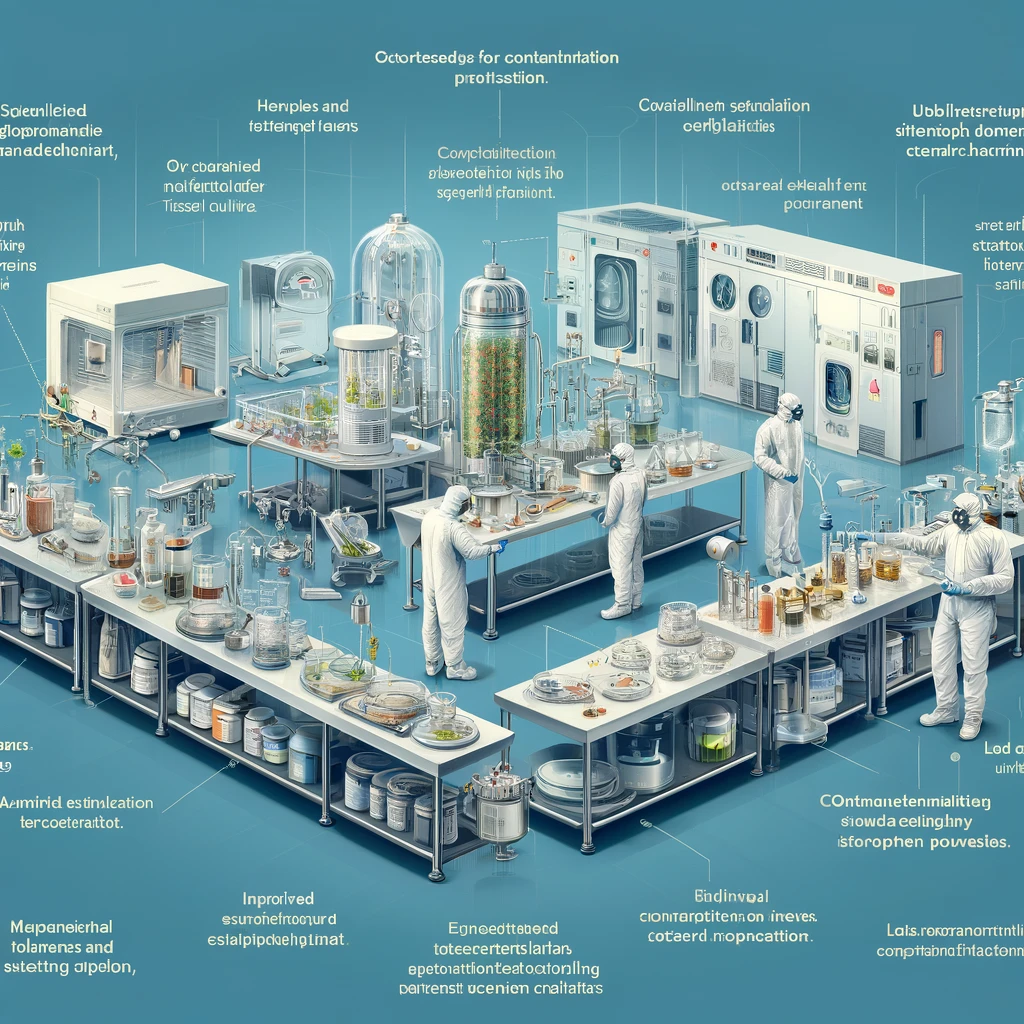
Strategies for Combating Contamination
Genetic Stability of Tissue-Cultured Plants: Maintaining the Integrity of Aroid Genetics
One of the key advantages of tissue culture is the ability to produce clonal propagules, or genetically identical copies, of the parent plant. However, the in vitro environment can introduce genetic variations, known as somaclonal variations, which can alter the genetic makeup of the cultured plants.
Understanding Somaclonal Variation
Somaclonal variation refers to the genetic changes that can occur during the tissue culture process. These variations can arise from a variety of factors, including:
- Genetic instability: The stress of the in vitro environment can trigger genetic instability, leading to mutations and chromosomal abnormalities.
- Epigenetic changes: The culture conditions and growth regulators used in the medium can induce epigenetic modifications, altering gene expression without changing the DNA sequence.
- Polyploidy: The accidental doubling of chromosomes can result in the production of polyploid cells, which can have significant impacts on the plant's phenotype.
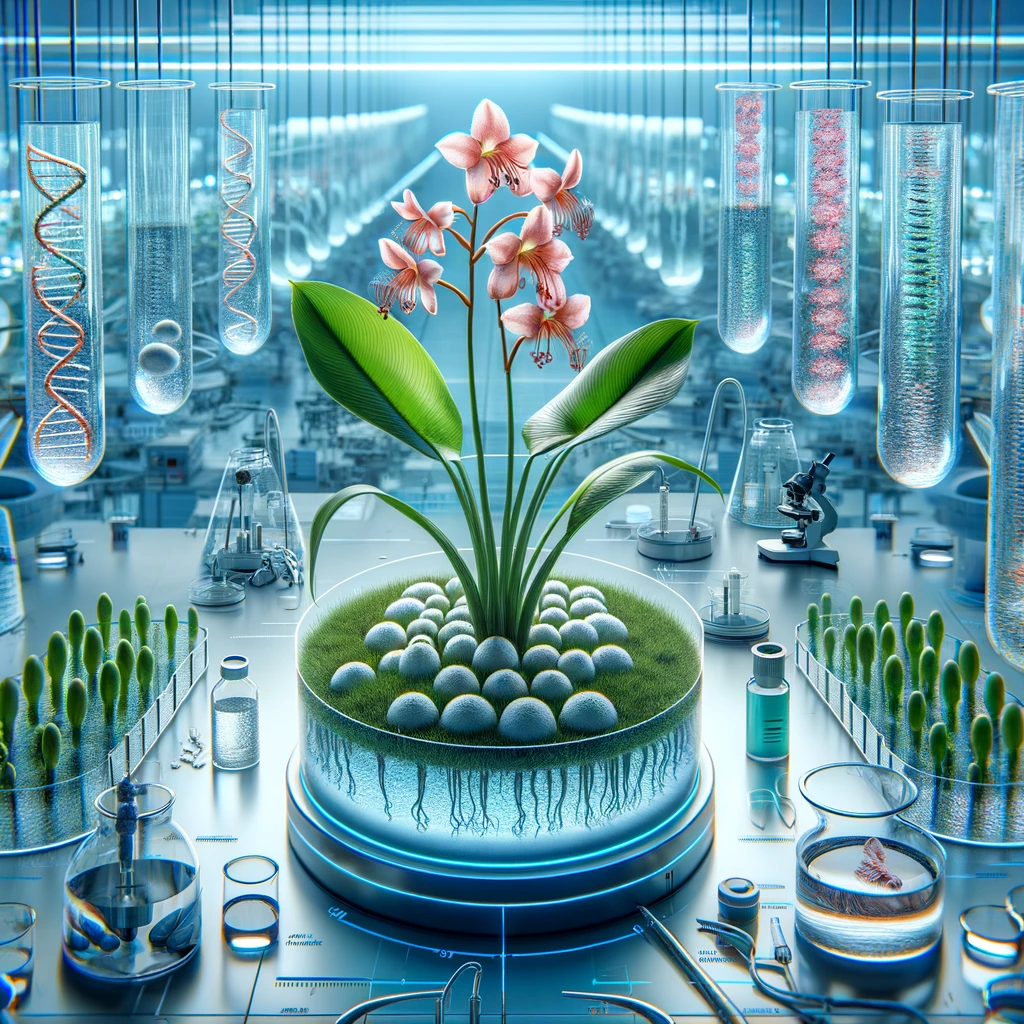
Genetic Stability of Tissue-Cultured Plants
Maintaining Genetic Stability in Aroid Tissue Culture
Ensuring the genetic stability of tissue-cultured aroid plants is crucial to preserving the desired traits and characteristics of the parent plants. Here are some strategies to mitigate the risk of somaclonal variation:
- Careful selection of explant source: Choosing young, actively growing plant tissues as the source for explants can minimize the risk of genetic instability.
- Optimization of culture conditions: Adjusting factors like media composition, growth regulator levels, and incubation conditions can create an environment that is less likely to trigger genetic changes.
- Regular genetic analysis: Implementing periodic genetic screening, such as through the use of molecular markers or flow cytometry, can help identify and remove any genetically aberrant plants from the culture system.
- Minimizing subculture cycles: Reducing the number of times the cultures are subcultured can help maintain genetic stability, as each subculture introduces the potential for genetic changes.
- Cryopreservation: Storing plant material in liquid nitrogen (cryopreservation) can effectively halt the tissue culture process, preserving the genetic integrity of the cultures.
By employing these strategies, tissue culture practitioners can work towards maintaining the genetic fidelity of their aroid cultures, ensuring that the propagated plants retain the desired characteristics of their parent stock.
Addressing Tissue Culture Failures: Troubleshooting the Path to Success
Despite the many advantages of tissue culture, the process is not without its challenges. Tissue culture failures can occur at various stages, from the initial explant establishment to the final acclimatization of the plantlets. Understanding the common causes of these failures and implementing targeted solutions can greatly improve the success rate of aroid tissue culture.
Explant Establishment Challenges
The first critical stage of tissue culture is the establishment of the explant. This is where the plant material is introduced into the culture medium and must adapt to the in vitro environment. Common challenges at this stage include:
- Explant necrosis: The plant material may undergo tissue death or browning due to factors such as wounding, oxidation, or microbial contamination.
- Poor growth and viability: The explant may struggle to initiate growth and remain viable in the culture medium, often due to suboptimal nutrient or growth regulator levels.
- Hyperhydricity: Also known as "vitrification," this is a physiological disorder characterized by abnormal, water-soaked plant tissues that can hinder growth and development.
Strategies for Improving Explant Establishment
To address these challenges, tissue culture practitioners can employ the following strategies:
- Explant selection and preparation: Carefully selecting healthy, actively growing plant parts and optimizing surface sterilization procedures can improve the chances of successful explant establishment.
- Medium optimization: Adjusting the nutrient composition, growth regulator balance, and other factors in the culture medium can create a more favorable environment for the explant to thrive.
- Antioxidant supplementation: Adding antioxidants, such as ascorbic acid or activated charcoal, to the medium can help mitigate the effects of oxidative stress on the explant.
- Controlled environment: Maintaining the appropriate temperature, light conditions, and humidity levels in the culture room can support the explant's adaptation to the in vitro environment.
Challenges During Subsequent Culture Stages
As the tissue culture process progresses, additional challenges may arise, such as:
- Slow growth or stunting: The cultured plants may exhibit suboptimal growth rates or fail to develop normally.
- Abnormal morphology: The in vitro conditions can sometimes lead to the development of undesirable physical characteristics, such as deformed leaves or stunted roots.
- Recalcitrance to rooting: Some aroid species may struggle to produce healthy, well-developed root systems, hindering the transition to ex vitro conditions.
Strategies for Overcoming Subsequent Challenges
To address these challenges during the later stages of tissue culture, the following approaches can be beneficial:
- Medium optimization: Adjusting the nutrient formulation, growth regulator concentrations, and other medium components can support the optimal growth and development of the cultured plants.
- Subculture management: Carefully timing and managing the subculture process, such as by reducing the frequency or altering the subculture techniques, can help maintain the health and vigor of the cultures.
- Acclimatization protocols: Developing well-defined protocols for the gradual acclimation of the tissue-cultured plantlets to ex vitro conditions can improve their survival and adaptation to the natural environment.
By addressing the various challenges that can arise throughout the tissue culture process, practitioners can enhance the success rate of aroid propagation and ensure the production of healthy, genetically stable plants.
Conclusion
The captivating allure of aroid plants, with their exquisite foliage and exotic blooms, has driven a growing demand for their cultivation and propagation. Tissue culture, with its ability to efficiently multiply and preserve these botanical treasures, has emerged as a powerful tool in the horticulture industry.
However, the path to success in aroid tissue culture is not without its challenges. Contamination, genetic instability, and various failures at different stages of the process can threaten the viability and integrity of the cultured plants. By understanding these challenges and implementing targeted strategies, tissue culture practitioners can navigate the complexities of aroid propagation and unlock the full potential of this remarkable technology.
Through meticulous sterilization protocols, genetic stability monitoring, and comprehensive troubleshooting, the tissue culture of aroid plants can be transformed from a daunting task to a rewarding endeavor. The ability to produce clonal propagules, preserve rare and endangered species, and make these botanical wonders accessible to a wider audience is a testament to the transformative power of tissue culture.
As the field of aroid horticulture continues to evolve, the advancements in tissue culture will undoubtedly play a pivotal role in shaping the future of this captivating plant family. By embracing the challenges and solutions presented in this article, tissue culture enthusiasts can unlock the true beauty and resilience of aroid plants, paving the way for their widespread appreciation and conservation.
FAQs
1. What are the most common contamination issues encountered in Aroid tissue culture, and how can they be prevented?
Common Contaminants: Bacteria, fungi, and algae are the most frequent culprits. They can be introduced through unsterile tools, contaminated plant material, airborne spores, or inadequate aseptic techniques.
Prevention Strategies:
Rigorous sterilization of tools and work surfaces
Careful selection and preparation of explant material
Use of laminar flow hoods and HEPA filters
Strict adherence to aseptic techniques
Regular monitoring and early detection of contamination
2. Why do some Aroid species prove more difficult to propagate through tissue culture than others?
Species-Specific Challenges: Some Aroids have unique growth requirements or sensitivities to the tissue culture environment. They may exhibit slow growth, browning, or hyperhydricity (excessive water uptake).
Solutions:
Research and optimization of culture media and conditions for each species
Use of plant growth regulators (PGRs) to promote specific growth patterns
Experimentation with different explant types and ages
3. How can hyperhydricity (vitrification) be avoided or remedied in Aroid tissue cultures?
Causes of Hyperhydricity: High humidity, excessive cytokinin levels, or imbalances in the culture medium can lead to this glassy, waterlogged appearance in plantlets.
Prevention and Treatment:
Lowering humidity levels in the culture environment
Adjusting the cytokinin-to-auxin ratio in the medium
Adding gelling agents like agar to increase medium firmness
Transferring affected plantlets to a new medium
4. What are the best practices for acclimatizing Aroid plantlets from tissue culture to greenhouse or outdoor conditions?
Gradual Transition: Plantlets need a gradual introduction to higher light levels, lower humidity, and natural temperature fluctuations.
Acclimatization Steps:
Gradually increase light exposure
Reduce humidity by opening culture vessels or using humidity tents
Introduce beneficial microbes to help plantlets develop resistance
Monitor plantlets closely for signs of stress and adjust conditions accordingly
5. How can tissue culture be used to conserve endangered or rare Aroid species?
Conservation Tool: Tissue culture provides a way to multiply rare plants without harming wild populations. It can also be used to create disease-free stock for reintroduction programs.
Conservation Strategies:
Collecting and preserving germplasm (genetic material) of endangered species
Establishing tissue culture protocols for propagation
Collaborating with botanical gardens and conservation organizations to share knowledge and resources
Ready to Dive into the World of Tissue Culture Aroids? Explore our curated collection of Tissue Culture Aroid Plants at Greenboog, where we've harnessed the power of science to bring you the most sought-after and rare varieties. From the vibrant variegation of Philodendrons to the striking foliage of Monsteras, our tissue-cultured plants are disease-free, robust, and ready to thrive in your collection. Discover the future of plant propagation and elevate your indoor jungle with Greenboog's Tissue Culture Aroids.
https://bit.ly/46jZhR1
Nhận xét
Đăng nhận xét